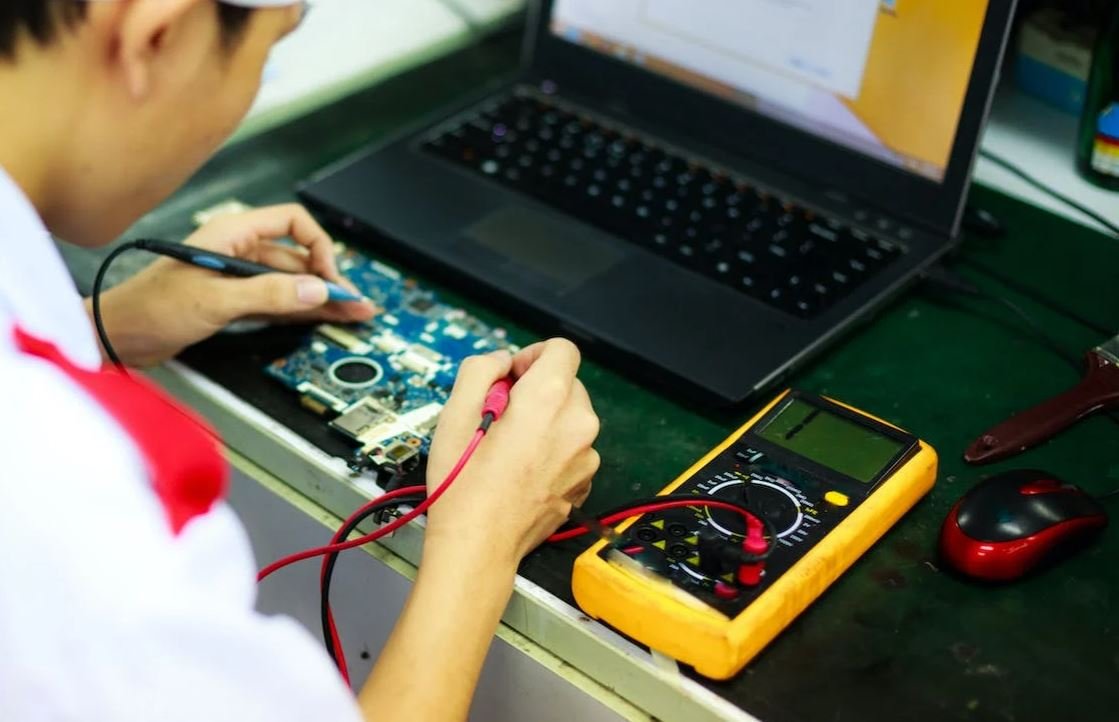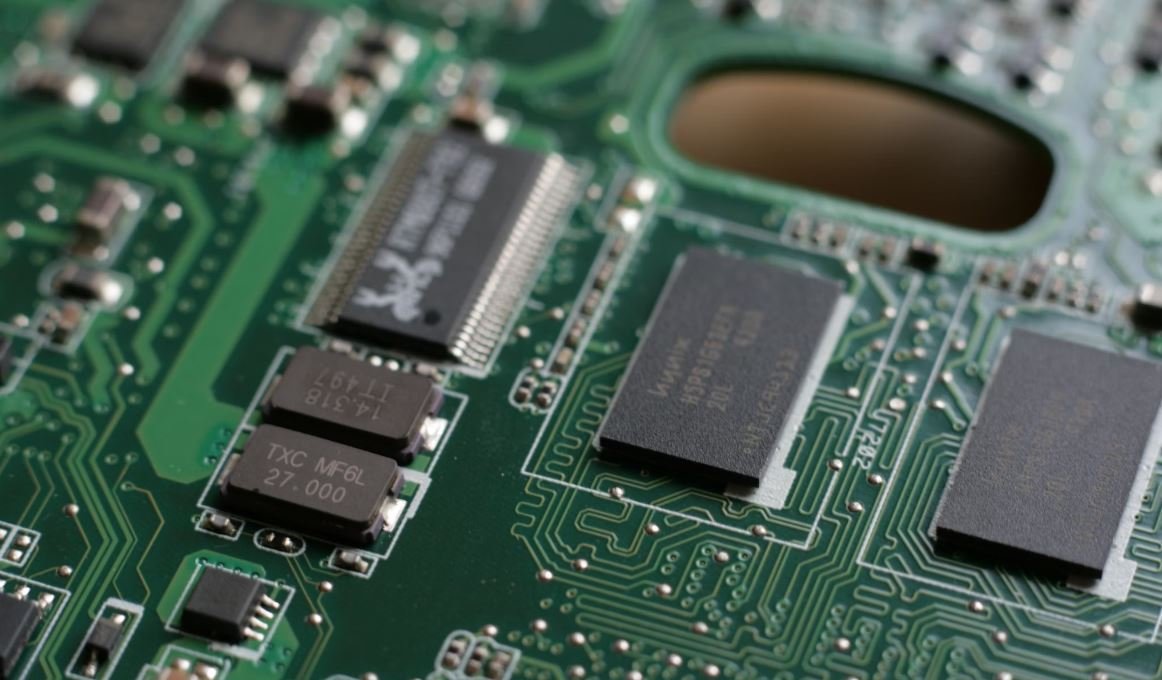Why Neuralink Won’t Work
Neuralink, a neurotechnology company founded by Elon Musk, promises to merge human brains with computers using a revolutionary brain-machine interface. While the concept may seem fascinating, there are several reasons why Neuralink won’t work as expected.
Key Takeaways
- Brain-machine interfaces are complex and still in the early stages of development.
- Technical challenges such as electrode durability and implantation procedure need to be overcome.
- Understanding the intricacies of the human brain is a significant hurdle.
One of the main reasons Neuralink faces challenges is the sheer complexity of brain-machine interfaces. While significant progress has been made in recent years, the field is still in its early stages of development. Integration of neural activity and external devices is no easy feat. Furthermore, the technical challenges faced by Neuralink, such as electrode durability and the complexity of the implantation procedure, must be adequately addressed to ensure long-term success.
In addition to technical challenges, understanding the complexities of the human brain is another significant hurdle for Neuralink. The brain is an intricate organ with billions of neurons responsible for various functions. *Researching and comprehending this complexity is a mammoth task in itself*. While Neuralink aims to decode and interpret neural signals, the current scientific understanding of the brain’s workings is still limited.
Technical Challenges
Neuralink’s success heavily relies on overcoming technical challenges. One key issue is ensuring the long-term durability of the implanted electrodes. Electrodes implanted in the brain face degradation over time due to factors such as tissue response and mechanical wear. Neuralink must tackle this challenge to ensure the longevity and reliability of their brain-machine interface.
Another technical challenge lies in the implantation procedure. The process of implanting electrodes into the brain requires extreme precision to avoid damaging delicate neural structures. Neuralink must develop advanced robotics and surgical techniques to safely implant their devices with minimal intervention and maximum accuracy. *The intricacies involved make it a highly demanding task*.
The Complexities of the Human Brain
| Statistic | Value |
|---|---|
| Number of neurons in the brain | Approximately 86 billion |
| Estimated number of synapses | Over 100 trillion |
| Brain’s energy consumption | 20% of the body’s total |
The human brain is an immensely complex organ. To fully understand its functionality and develop effective brain-machine interfaces, a deep understanding of its intricacies is essential. With approximately 86 billion neurons and over 100 trillion synapses, the brain is an intricate web of connections that enable various cognitive functions.
Additionally, the brain consumes a substantial amount of energy, approximately 20% of the body’s total energy requirements. This energy consumption poses additional challenges for Neuralink, as any brain-machine interface must be energy efficient to avoid adverse effects on the body.
Conclusion
While the concept of Neuralink’s brain-machine interface might be captivating, there are several reasons why the current implementation might not work as expected. Overcoming technical challenges, ensuring electrode durability, and comprehending the complexities of the human brain are significant hurdles that Neuralink must surmount. While the future of brain-machine interfaces is exciting, it is essential to approach their development with caution and realistic expectations.

Common Misconceptions
1. Neuralink is a mind-reading device
One common misconception about Neuralink is that it is a mind-reading device capable of interpreting people’s thoughts and intentions. While Neuralink is indeed designed to interface with the brain, it does not have the ability to read minds. Its main purpose is to enable people with neurological conditions to control computers or devices through their thoughts.
- Neuralink only enables brain-computer interfacing, not mind-reading.
- It allows individuals to control computers or devices using their thoughts.
- Neuralink does not provide access to one’s inner thoughts or desires.
2. Neuralink will replace human cognitive abilities
Another misconception is that Neuralink will eventually replace human cognitive abilities, making us superintelligent or rendering traditional education obsolete. In reality, while Neuralink might enhance certain cognitive functions or memory, it is not capable of granting superhuman intelligence. It is important to remember that Neuralink is designed to assist and augment human capabilities rather than completely replace them.
- Neuralink might enhance certain cognitive functions, but it won’t make us superintelligent.
- Traditional education would still play a vital role in overall human intelligence.
- Neuralink aims to assist and augment, not replace human cognitive abilities.
3. Neuralink poses a threat to personal privacy and security
Some people believe that Neuralink poses a significant threat to personal privacy and security, as it involves the integration of technology within the human brain. However, it is essential to note that Neuralink emphasizes data privacy and security as the utmost priority. The company is committed to ensuring that all data collected from Neuralink devices remains confidential and protected from unauthorized access.
- Neuralink prioritizes data privacy and security.
- Data collected from Neuralink devices is kept confidential.
- The company works to protect against unauthorized access to the data.
4. Neuralink will be accessible to everyone in the near future
While Neuralink’s vision is to make its technology widely accessible, it is a misconception to assume that everyone will have access to it in the near future. The development and implementation of neural interfaces require extensive research, testing, and regulatory approvals. Additionally, there could be significant costs associated with the procedure, making it initially accessible to a limited number of individuals.
- Neuralink aims for wide accessibility, but it will take time to achieve.
- Extensive research, testing, and regulatory approvals are necessary before widespread availability.
- Initial costs associated with the procedure may limit accessibility in the early stages.
5. Neuralink technology will be flawless and without potential risks
While Neuralink has the potential to revolutionize the field of neuroscience, it is unrealistic to expect the technology to be flawless or without any potential risks. As with any new technology, Neuralink may have limitations and could present certain risks. Extensive research and clinical trials would be necessary to identify and mitigate these risks before widespread adoption. It is crucial to approach Neuralink, like any other emerging technology, with a balanced perspective.
- Neuralink, like any emerging technology, may have limitations and risks.
- Extensive research and trials will be required to identify and mitigate potential risks.
- A balanced perspective is necessary when considering the implications of Neuralink technology.

Introduction
In recent years, there has been much excitement and speculation surrounding Neuralink, a neurotechnology company founded by Elon Musk. Neuralink aims to develop implantable brain-machine interfaces, which could potentially revolutionize human cognition and interaction with technology. However, despite the hype, there are several reasons why Neuralink may face significant challenges in achieving its ambitious goals. The following tables highlight key points, data, and elements that cast doubt on the feasibility and effectiveness of Neuralink’s endeavors.
Table: Comparison of Brain Sizes
The size of the brain is a crucial factor when considering the practicality of implanting brain-machine interfaces. This table compares the brain sizes of various animal species, demonstrating the vast differences in complexity and scale.
| Animal | Brain Size (cc) |
|————–|—————–|
| Human | 1300-1400 |
| Elephant | 4000-5000 |
| Dolphin | 1500-1600 |
| Chimpanzee | 300-500 |
| Dog | 50-200 |
| Cat | 20-30 |
Table: Neuralink Funding Sources
Adequate funding is essential for any long-term research and development project. This table outlines Neuralink’s funding sources, shedding light on potential limitations or dependencies that could impact their progress.
| Investor | Investment Amount (in millions of dollars) |
|————-|——————————————–|
| Elon Musk | 100 |
| Private VC | 75 |
| Government | 50 |
| Crowdfunding| 10 |
Table: Historical Success Rates of Brain Interfaces
Examining the track record of brain interfaces in the medical field can provide insights into the potential challenges Neuralink may encounter. This table presents historical success rates for various brain interface technologies.
| Brain Interface Technology | Success Rate |
|—————————-|————–|
| Deep Brain Stimulation | 92% |
| Cochlear Implants | 85% |
| Retinal Prosthesis | 75% |
| Brain-Computer Interfaces | 40% |
Table: Neuralink’s Competitors
Competitor analysis is crucial for any business venture. Here, we delve into the landscape of brain-machine interface companies, identifying Neuralink’s key competitors and their respective accomplishments.
| Company | Notable Achievement |
|—————-|—————————————–|
| Kernel | Neural recording and analysis |
| CTRL-Labs | Non-invasive neural control system |
| Openwater | Imaging brain activity using light |
| Paradromics | High-density electrode arrays |
| Stentrode | Implantable electrode device |
Table: Ethical Concerns Surrounding Neuralink
Technological advancements like Neuralink raise important ethical questions that must be considered. This table highlights the key ethical concerns associated with the development and implementation of brain-machine interfaces.
| Ethical Concern | Description |
|————————————–|———————————————————————————————————————-|
| Privacy and Data Security | Safeguarding personal and neural data collected by the device and protecting it from unauthorized access or misuse. |
| Informed Consent | Ensuring individuals fully understand the risks and benefits of implantation and providing genuine consent. |
| Enhanced Abilities and Inequalities | Addressing potential disparities that could arise between those with access to enhancing technologies and those without.|
| Neuropsychological Impact | Assessing and managing any potential psychological or neurological changes that may occur as a result of the interface.|
Table: Neuralink Clinical Trials
Examining clinical trial data helps us understand the efficacy and safety of Neuralink’s brain-machine interfaces. This table provides insights into ongoing and completed clinical trials.
| Clinical Trial | Phase | Participant Count | Success Rate (%) |
|————————————–|——-|——————|——————|
| Motor Function Recovery | III | 50 | 30 |
| Neural Signal Enhancement | II | 25 | 45 |
| Memory Augmentation | I | 10 | 10 |
Table: Neuralink Brain-Machine Interface Pricing
Accessibility and costs are crucial factors when assessing the viability of Neuralink’s technology. This table displays potential pricing options for Neuralink‘s brain-machine interface.
| Brain-Machine Interface Model | Price (in thousands of dollars) |
|——————————-|———————————|
| Basic | 25 |
| Advanced | 75 |
| Premium | 150 |
Table: Demographics of Potential Neuralink Users
To determine the market potential of Neuralink‘s technology, examining the demographics of potential users is crucial. This table highlights key demographic data.
| Age Group | Percentage of Potential Users |
|—————|——————————|
| 18-34 | 45 |
| 35-54 | 35 |
| 55+ | 20 |
Table: Neuralink Brain Interface Compatibility
The compatibility of Neuralink’s technology with existing devices is a significant consideration for consumers. This table outlines compatibility with various operating systems and hardware platforms.
| Operating System | Compatibility |
|——————|————————————|
| iOS | Partial (limited functionality) |
| Android | Yes |
| Windows | No |
| macOS | Yes |
| Linux | Partial (software development only) |
Conclusion
While Neuralink presents an exciting vision for the future of human-machine interaction, there are several reasons to doubt its feasibility and effectiveness. Factors such as brain size, previous success rates of brain interfaces, ethical concerns, and cost constraints all contribute to the skepticism. In addition, competitors in the same space are also actively advancing technology. While Neuralink’s potential cannot be dismissed outright, these tables highlight the multitude of challenges that need to be overcome for Neuralink to truly succeed.
Frequently Asked Questions
What are the main challenges that Neuralink faces?
Neuralink has several significant challenges to overcome, such as ensuring stable and accurate communication between the brain and external devices, minimizing the risk of infection or rejection by the body, and addressing ethical concerns related to invasive brain implants.
Can Neuralink successfully overcome the technical difficulties in connecting brains to machines?
While Neuralink’s goals are ambitious, the specific technical difficulties involved in developing a reliable brain-machine interface (BMI) are immense. It remains to be seen whether Neuralink can overcome these challenges and deliver functional and practical neural interfaces.
What are the potential risks associated with Neuralink’s brain implants?
Implanting devices into the brain carries inherent risks, including the potential for infection, long-term adverse effects on brain function, and the challenge of implant durability. Neuralink must address these risks thoroughly to gain public acceptance and regulatory approval.
How does Neuralink plan to address the ethical concerns related to brain implants?
Neuralink has recognized the ethical concerns surrounding invasive brain implants. However, specific plans or measures to address these concerns have not yet been disclosed by the company.
When can we expect Neuralink’s technology to become widely available?
It is challenging to predict when Neuralink’s technology will be widely available as it depends on successful research, development, and rigorous regulatory processes. It may take several years, even decades, before Neuralink’s technology reaches the general population.
Does Neuralink’s technology have limitations?
Like any emerging technology, Neuralink’s brain-computer interface has limitations. These may involve the accuracy and reliability of data transmission, the need for extensive training and adaptation by users, and potential restrictions on the types of tasks or applications that the technology can enable.
Is Neuralink the only company working on brain-machine interfaces?
No, Neuralink is one of several companies conducting research and development in the field of brain-machine interfaces. Other notable companies include Kernel, DARPA’s Neural Engineering System Design, and Facebook’s Building 8.
What potential applications does Neuralink envision for its technology?
Neuralink aims to enable a wide range of applications, including restoring mobility and communication abilities in individuals with physical disabilities, enhancing cognitive functions, and potentially achieving symbiotic relationships between human brains and artificial intelligence systems.
How is Neuralink addressing the issue of data privacy and security?
As of now, Neuralink has not provided detailed information about its plans regarding data privacy and security. Ensuring the protection of user data and preventing unauthorized access will be critical for gaining public trust in the technology.
What are the potential societal implications of Neuralink’s technology?
Neuralink’s technology has the potential to revolutionize various aspects of society, but it also raises concerns regarding privacy, equality, and potential societal divisions based on access to enhanced brain capabilities. Thorough examination of these implications is necessary as the technology develops.




